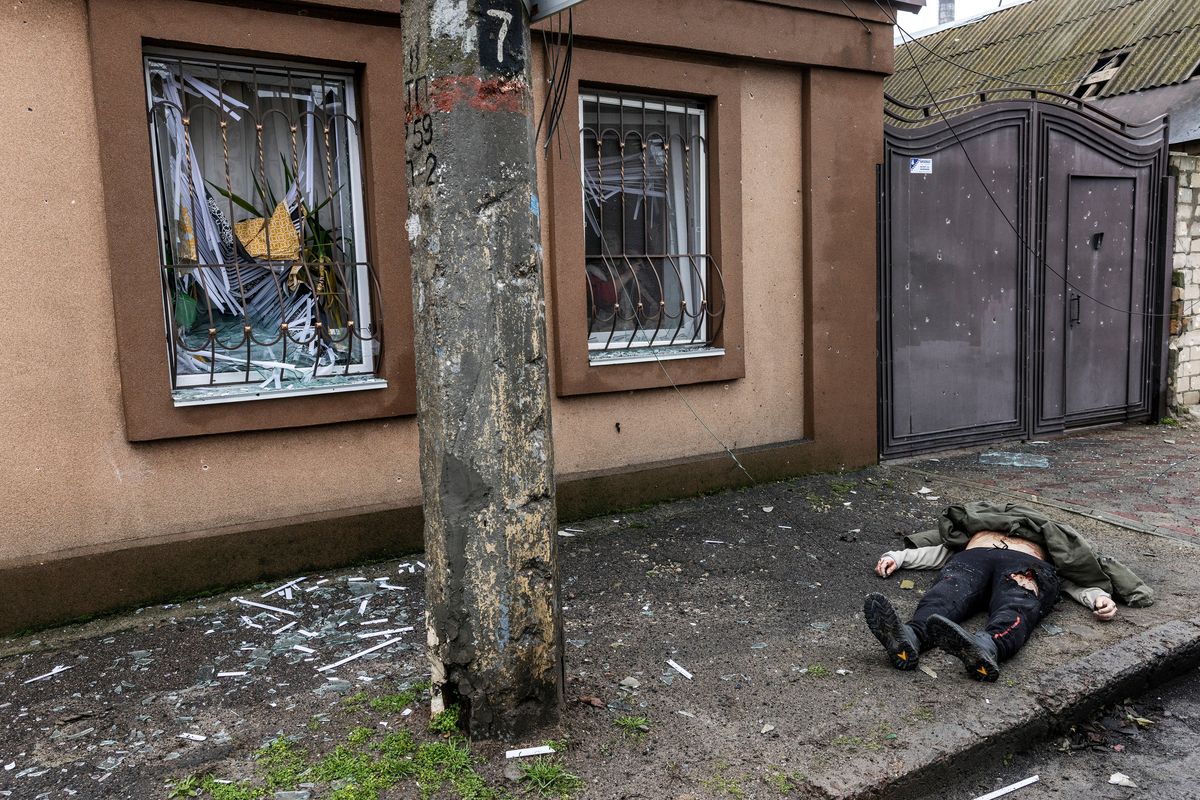Ukraine Says Russia is training soldiers for possible new offensive

KYIV, Ukraine – Ukraine is bracing for the possibility that Russia will sharply escalate the war in a winter offensive as Moscow tries to turn the tide on the battlefield and limit political backlash at home, a senior adviser to President Volodymyr Zelenskyy said Sunday.
Despite suffering severe setbacks over the first 10 months of war, the Russian military is now laying plans for mass infantry attacks akin to the tactics employed by the Soviet Union during World War II, the adviser, Mykhailo Podolyak, said in written responses to questions.
Podolyak’s comments came as Ukraine’s top military and political leaders have been warning in a series of recent interviews that Russia is massing troops and armaments to launch a renewed ground offensive by spring that very likely would include a second attempt to seize Kyiv, the Ukrainian capital.
Russia has already drafted and is training soldiers who might be deployed in mass infantry attacks, Podolyak said.
It is one of several possible threats that Ukraine faces from Russia over the winter months, he said, as officials in Kyiv see little sign that President Vladimir Putin of Russia is seeking an end to the war.
“Russia’s political leadership clearly refuses to acknowledge the tactical defeats that already took place and grasps at any, even the most illusory, chances to change the situation in its favor,” Podolyak said.
Ukrainian officials have said they base their assessments of Russia’s war aims on the findings of their military and foreign intelligence agencies and on consultations with allies.
In his comments, Podolyak said that Ukraine was taking the risk of a fresh Russian offensive seriously and emphasized that its allies should understand this, too. As Western governments plan for future weapons transfers to Ukraine, he suggested, the equipment should match the future threats.
“It is extremely important that our partners take these risks no less seriously,” he said. “Russia is not interested in ending the war until it suffers a significant military defeat and is forced to focus on its own internal political transformation.”
Ukraine’s supreme military commander, Gen. Valeriy Zaluzhnyi, said in an interview with the Economist published last week that Ukraine was training and outfitting reserves to defend against a new Russian offensive that might come in January, February or March.
“The Russians are preparing some 200,000 fresh troops,” he said. “I have no doubt they will have another go at Kyiv.”
The statements by senior Ukrainian officials appeared to be part of a coordinated campaign to guard against complacency among Ukraine’s allies as the Russian army struggles on the battlefield. Since launching its full-scale invasion of Ukraine in February, Russia has fallen back in three major retreats – from the territory around Kyiv, in the northeastern Kharkiv region and, last month, in the southern region of Kherson.
The warnings also appear to be an attempt to counter the Kremlin’s efforts to persuade Ukraine’s Western allies to pressure Kyiv into a negotiated settlement.
In parallel with the fighting along the front lines, Russia has bombarded civilian infrastructure targets throughout the country, knocking out heating, water and electricity for millions of Ukrainians. In his nightly address to Ukrainians on Saturday, Zelenskyy said that electricity had been restored to 6 million people who lost power after a salvo of missile strikes Friday. The mayor of Kyiv, Vitali Klitschko, said Sunday that neighborhood heating systems damaged in the strikes had been fully restored.
Military analysts say that this campaign is intended to demoralize Ukrainians and push the Ukrainian government into a cease-fire that might allow Russia time to regroup and rearm for future offensives.
But analysts who rely on open-source intelligence have said it is difficult to know what is happening at Russian military training bases. The Kremlin said in September that it would mobilize 300,000 additional soldiers and that some are already deployed in Ukraine.
Podolyak said that the type of mass infantry warfare Moscow seems to be preparing for would not be effective against Ukraine’s increasingly modern arsenal of precision-guided weaponry and surveillance drones. But he said that the Russian military leadership had bent to Kremlin demands for advances on the ground for domestic political reasons.
Russian commanders, he said, “diligently maintain Putin’s illusion of the possibility of ‘victory,’ in order to, firstly, maintain Putin’s personal power, and secondly, to avoid harsh punishment for admitting loss.”
In their most recent setback, Russia forces retreated last month from the southern Ukrainian city of Kherson but remain within artillery range on the opposite bank of the Dnieper River. Through the day Sunday, Russian forces fired artillery at Kherson, wounding three people, Kyrylo Tymoshenko, a Ukrainian deputy presidential chief of staff, said in a post on Telegram.
In its morning update on the status of the battlefield Sunday, the Ukrainian military said that it had repulsed 15 ground assaults on its positions over the past 24 hours and that multiple front-line towns and villages had been targeted by Russian artillery.
Most of the attacks came in the Donbas area of eastern Ukraine, the only section of the front line where the Russian army is regularly staging offensive attacks. Along much of the rest of the crescent-shaped front line in southeastern Ukraine, Russian forces are in a defensive crouch, building fortifications along new lines after their retreats earlier in the fall.
This article originally appeared in The New York Times.